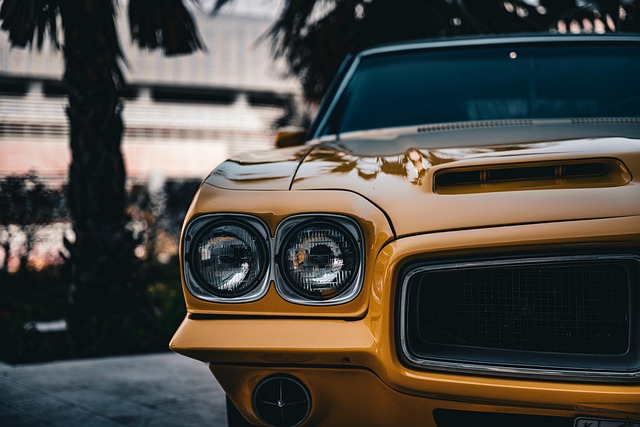Vin verification, a crucial process for ensuring car authenticity, involves checking a vehicle's unique 17-character VIN against national databases. In California, the DMV performs this check during registration, revealing accident history, outstanding loans, and maintenance records, thus fostering market transparency and safety. Individuals or businesses can verify vehicle history through manual checks on the DMV website or instant online services, addressing common concerns around minor accidents and documentation for a smoother used car transaction.
“Unraveling California DMV’s VIN Check Guidelines: Your Comprehensive Guide. In today’s world, understanding vehicle history is paramount before making a purchase. This article breaks down the intricacies of vin verification in California, exploring what it entails and how the DMV plays a pivotal role in reporting vehicle histories. We’ll walk you through the step-by-step process, common issues, and frequently asked questions to ensure a seamless experience during your vin verification check for cars in California.”
- Understanding VIN Verification: What It Entails
- California DMV's Role in Vehicle History Reporting
- Steps to Perform a VIN Check for Cars in California
- Common Issues and Frequently Asked Questions About VIN Checks
Understanding VIN Verification: What It Entails

VIN verification, or Vehicle Identification Number (VIN) check, is a critical process that involves scrutinizing a car’s unique 17-character identifier to ensure its authenticity and history. This comprehensive examination delves into various aspects of the vehicle’s lifecycle, from manufacturing details to previous ownership records. It serves as a powerful tool for both buyers and sellers to make informed decisions, ensuring the vehicle is not only as described but also free from any potential legal or safety issues.
During a VIN check, specialized databases are queried to retrieve information such as accident history, outstanding loans, and reported thefts. This process helps uncover hidden problems that might affect the car’s performance or safety, providing transparency in the market. For individuals purchasing used vehicles, understanding the VIN verification process is essential for protecting themselves from potential scams and ensuring they acquire a reliable vehicle.
California DMV's Role in Vehicle History Reporting

The California Department of Motor Vehicles (DMV) plays a pivotal role in ensuring vehicle transparency and safety through its VIN (Vehicle Identification Number) verification process. When a vehicle is registered or titled in California, the DMV conducts a thorough check using the unique 17-character VIN to access extensive vehicle history data. This includes details about previous owners, major accidents, outstanding loans, and maintenance records, all of which are crucial for buyers and lenders alike.
The DMV’s vin verification process is designed to prevent fraud and provide peace of mind. By cross-referencing the VIN with national databases, they can quickly identify any discrepancies or hidden issues associated with a vehicle. This proactive approach ensures that California residents involved in buying or financing vehicles have access to reliable information, fostering a safer and more transparent automotive market.
Steps to Perform a VIN Check for Cars in California

Performing a VIN (Vehicle Identification Number) check for cars in California is a straightforward process, offering both individuals and businesses a quick way to verify vehicle history. Here’s how it works:
1. Obtain the VIN: The first step is to locate and retrieve the VIN from the vehicle itself. This unique 17-character code can usually be found on the driver’s side of the dashboard, near the window, or on the vehicle’s registration documents.
2. Choose a Verification Method: California offers several options for VIN verification. You can conduct a manual check by visiting the California DMV website and using their online tools to input the VIN. Alternatively, many third-party services provide instant online VIN checks, often with additional details like accident history, ownership records, and vehicle specifications. These services are usually quick, affordable, and accessible from anywhere with an internet connection.
Common Issues and Frequently Asked Questions About VIN Checks

Many vehicle owners in California, especially when buying or selling used cars, often have questions about the state’s Department of Motor Vehicles (DMV) Vehicle Identification Number (VIN) check guidelines. This process is crucial for ensuring that vehicles are safe and authentic. Common issues include confusion over what information is required for a successful VIN verification and how to interpret the results.
Frequently Asked Questions (FAQs) often revolve around factors such as whether a clean DMV report guarantees a car’s history, the impact of minor accidents on the vehicle’s resalability, and how to handle discrepancies found during a VIN check. Understanding these issues can help buyers and sellers navigate the process more smoothly. Additionally, being aware of common challenges allows individuals to prepare relevant documentation in advance, ensuring a faster and more transparent VIN verification experience.
Vin verification is a crucial process for anyone looking to purchase or register a vehicle in California. The state’s Department of Motor Vehicles (DMV) plays a vital role in ensuring the accuracy of vehicle history reports, helping to prevent fraud and promoting transparency. By following the step-by-step guide outlined in this article, individuals can efficiently perform VIN checks, gain valuable insights into a car’s past, and make informed decisions. Remember, staying informed about these guidelines is essential for a smooth and secure automotive transaction.
